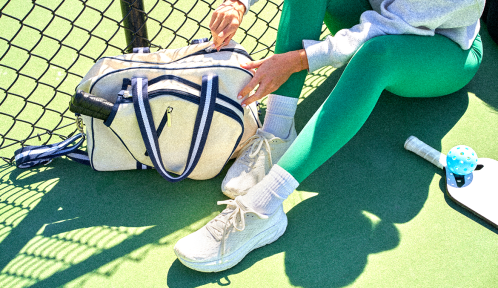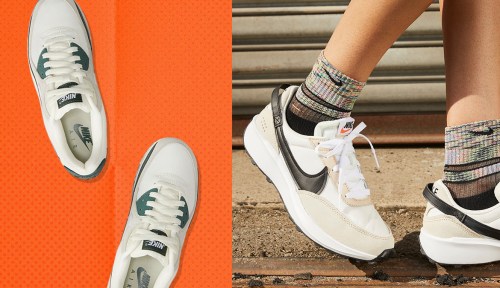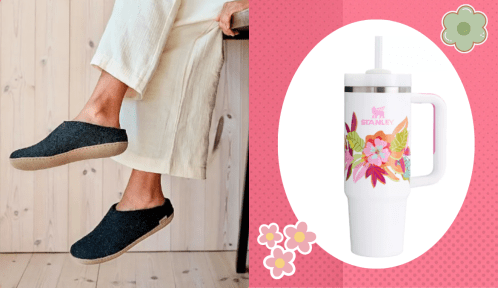I’ve always been jealous of people who can wear minimalist running sneakers. Not only do they look cool, they can add a myriad of benefits to your workout. And yet, because of the fun combo of high arches and super pronation that I was #blessed with, I’ve always believed that I need something with a lot more support when I head out for a run. Except maybe with the help of cork insoles, I actually don’t.
When a pair of Tread and Butter Cork Insoles ($60) came across my desk, I started researching them, and as it happens these insoles are meant to help add stability to otherwise barely-there sneakers. But considering running in pared-down shoes has created calf pain for me in the past, I asked Priya Parthasarathy, DPM of the American Podiatric Medical Association for her opinion about wearing them on a run.
“Cork insoles are naturally shock resistant and they provide cushioning while running. Cork is naturally breathable, they contour to your feet, they are lighter, and they absorb moisture,” she says. “As a runner you need increased shock absorption when your feet strike hard surfaces to prevent shin splints.” She also notes that cork can be a good option because they are sturdier than other insert materials, like gel or plastic, and the thickness can lift the heel and take pressure off of the achilles tendon.
However, Dr. Parthasarathy explains, there are some cork-related cons worth pointing out. “Cork is thick and takes up a lot of room in your shoes. If you have a high-arched foot and already have issues with the top of your foot hitting the shoe this may cause more problems,” she says. And because of the rigid material, you might have to replace them more often than in other instances.
Still, it sounded like it was worth giving it a shot. So early one morning, I added my cork insoles into my minimal running shoes that I usually just wear while running errands. I’ll admit that getting them inside the shoe wasn’t the easiest feat—it required a bit of maneuvering with some lacing and unlacing, but once I got them in there, I was impressed by how snugly they fit. With happy feet, it was time to log some miles.
I’ll admit that, at first, the upgraded sneaks took some getting used to. They felt a little weird and stiff for the first mile or so, but around the 8-minute mark I could feel the cork molding around the shape of my feet. And by the end of mile 2, it was as if I was floating. I clocked an easy 3.5 miles without really even thinking about my shoes, which was a completely different experience than what happened the last time I wore these same shoes on a 4-mile run.
Hours later, my legs and feet feel fantastic—and I genuinely believe that I have the insoles to thank. But though my experience was one generally filled with heart-eyes emojis, Dr. Parthasarathy says that may not be the case for everyone. “I think it is really important to seek professional guidance, even it is not for custom inserts but to recommend a running shoe and over-the-counter insole,” she says. “For example, if the cork insert has an arch that is too high and you are a trail runner this can lead to lateral ankle injuries. If you pair a stability insole with a stability shoe that may be too much support and create an injury.” Insoles, like running shoes in general, are a very personal decision, so be to pick the right pair so you can hit the ground running.
You heard it here first: 2019 is the year of cork. It’s only February, and we’ve already started to swear by it in our insoles, our facial massagers, and our yoga mats. What will come next?!
Sign Up for Our Daily Newsletter
Get all the latest in wellness, trends, food, fitness, beauty, and more delivered right to your inbox.
Got it, you've been added to our email list.











